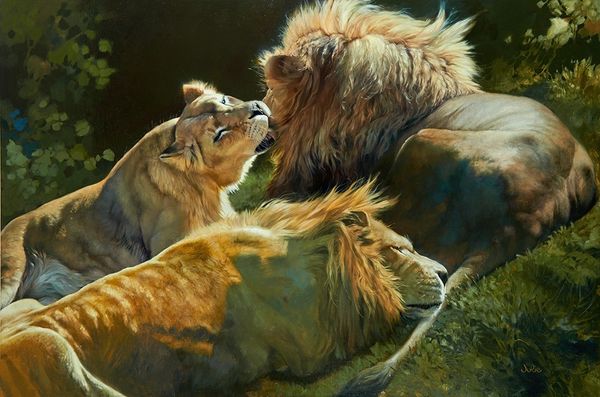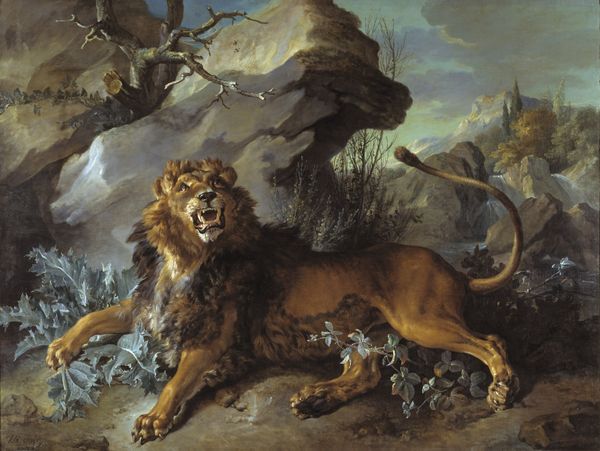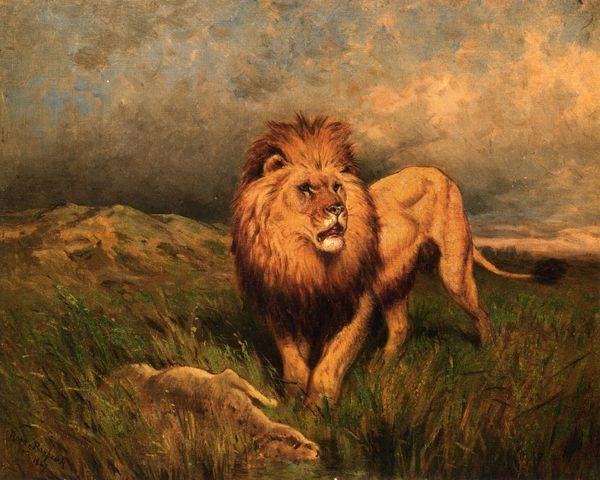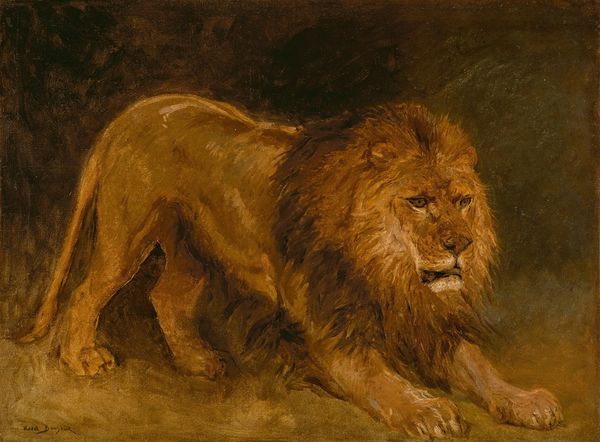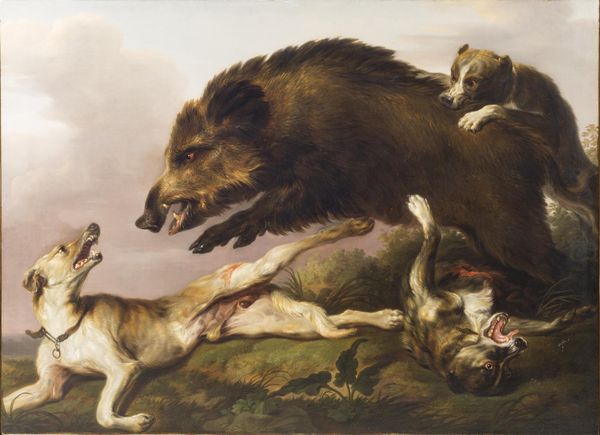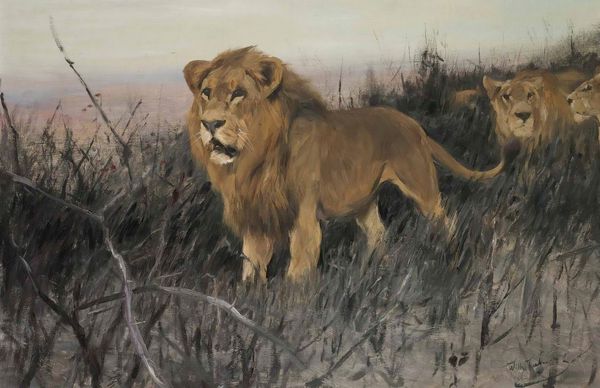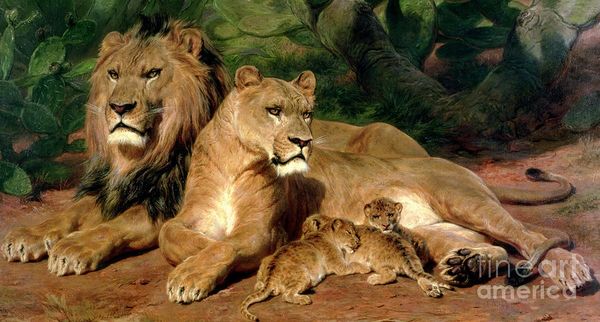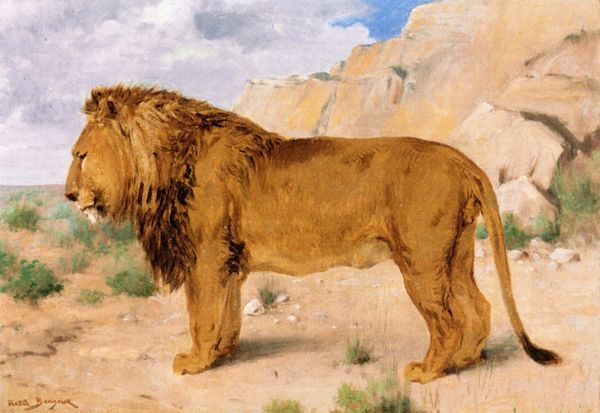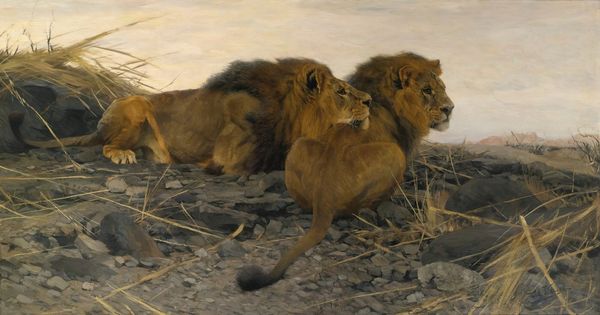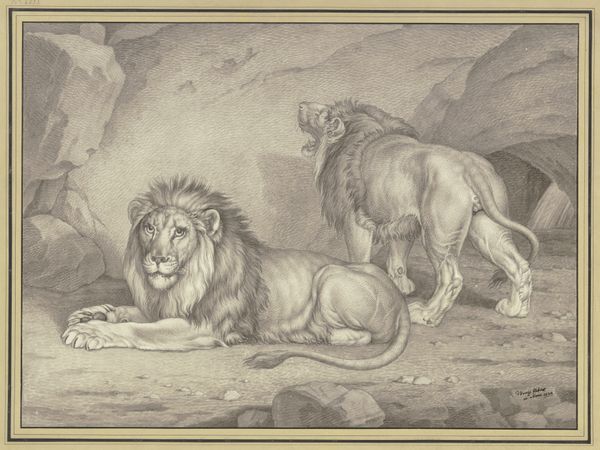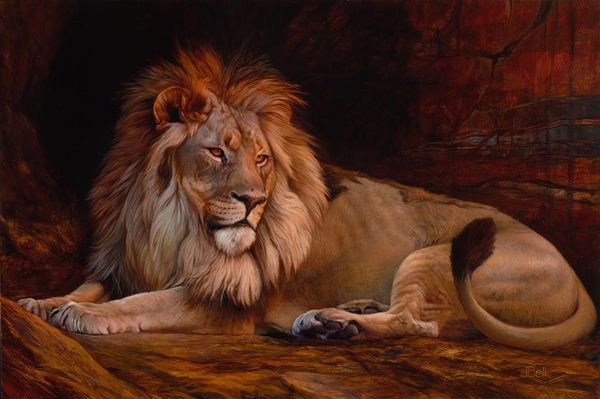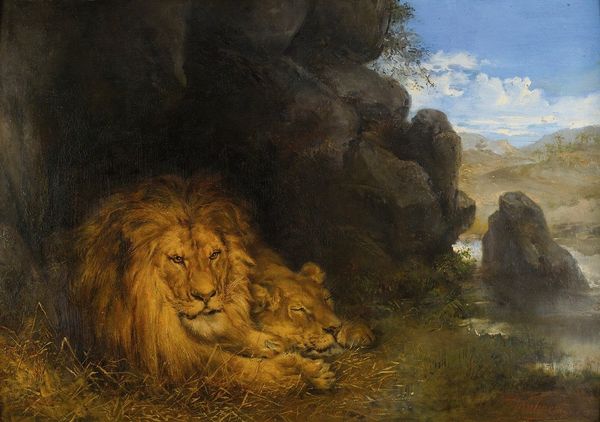
Copyright: Public Domain: Artvee
Editor: This is "Lion and Lioness" painted by George Stubbs in 1770 using oil paint. The lioness seems so protective and fierce. What's your take on this dramatic encounter? Curator: This work immediately brings up questions of power dynamics for me. We see the lioness, not the lion, baring her teeth. What do you make of Stubbs choosing to depict the female in such an active, defensive posture? Editor: I suppose it challenges traditional portrayals of male dominance. Were there specific cultural or social factors influencing Stubbs' decision to portray the lioness this way? Curator: Absolutely. Think about the Enlightenment ideals circulating at the time, questioning established hierarchies. Also consider the burgeoning interest in natural history and the "exotic." Stubbs, through his anatomical studies, presents a realism that disrupts romanticized views of nature. How does the landscape contribute to this dynamic? Editor: The dark, almost claustrophobic background makes the scene feel more intense. It almost isolates the pair and puts their raw emotion on full display. Curator: Precisely. And notice how Stubbs uses light and shadow to create a sense of tension. But consider, too, the potential for projecting human anxieties about control, freedom, and even gender roles onto these animals. It is nature but depicted through a very human lens. What have you learned by considering this painting in its historical and cultural context? Editor: I realize how much the context shapes my reading of the work! Thinking about Enlightenment ideas makes the active role of the lioness much more interesting and less like a simple illustration of nature. Curator: Exactly. Art isn't created in a vacuum. Exploring these historical and social threads unveils new dimensions and interpretations, allowing for a richer, more critical engagement with the artwork.
Comments
No comments
Be the first to comment and join the conversation on the ultimate creative platform.

